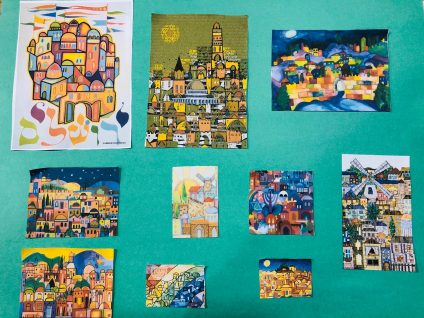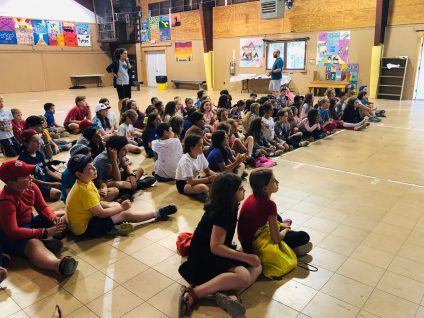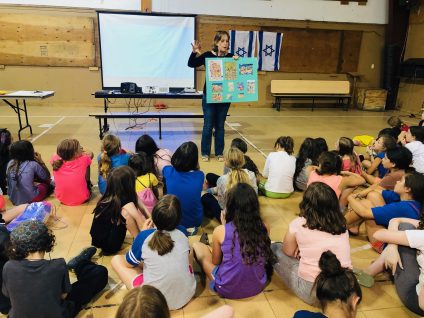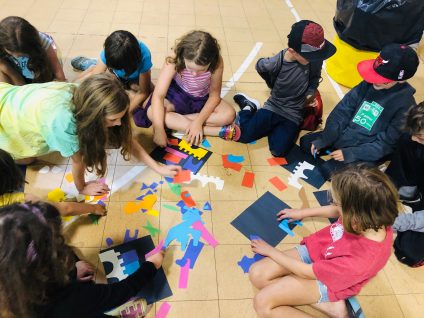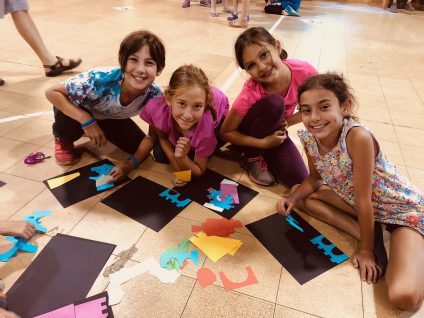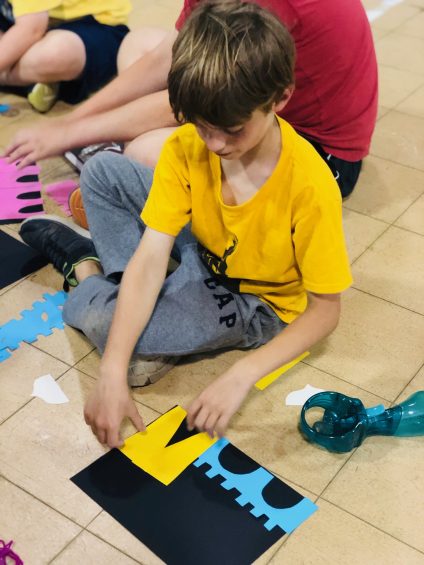Limmud- Let’s Build Jerusalem
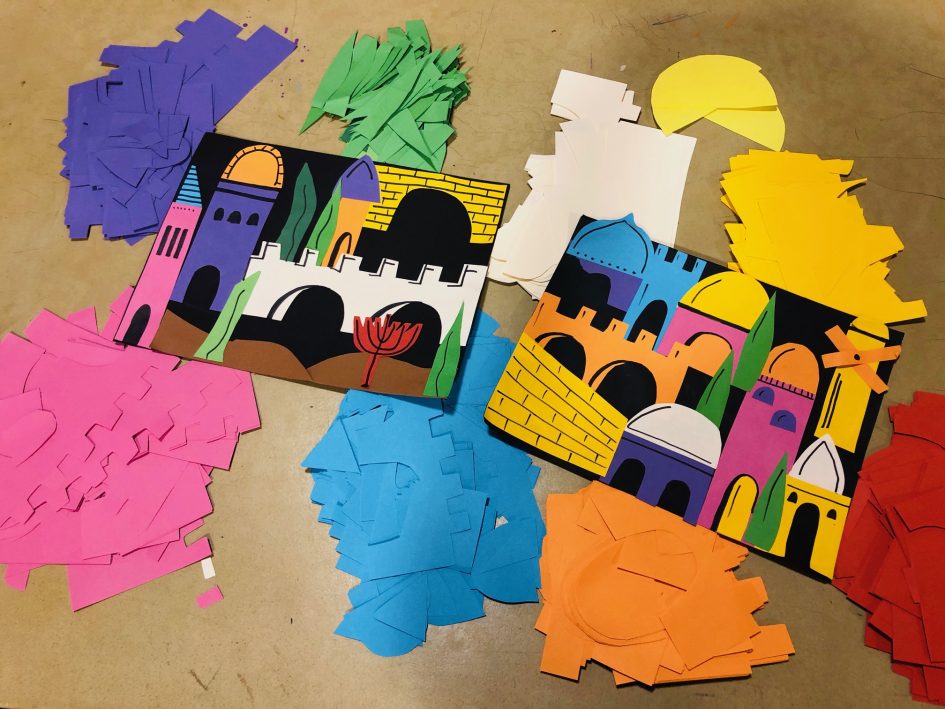
Today tzvet limmud (the Jewish education staff) created an amazing program for the transitional period of Tisha B’av which is the time after mincha. The program very much focused on the rebuilding of Jerusalem not only in olden days but in modern Jewish history. Here was the amazing program that our chanichim (campers) participated in.
Emily Shapiro Katz from tzevet limmud introduced the program explaining to the chanichim that the main historical event that we are mourning on Tisha B’av is the destruction of the Temples in Jerusalem. The kinot (sad passages) that we read describe Jerusalem as “a city that is in mourning and in ruins, humiliated and desolate without her children.” While that certainly was the case 1000s of years ago, today, it is very much alive as the modern bustling capital of the Jewish State.
It is important to know that since at least 1967, there have been great Jewish thinkers who have suggested that we change our prayers on this day. For example, Rabbi Haim David Halevy (was Sephardic chief rabbi after Rav Ovadia Yosef in the 70s-80s) – changed the wording to the city that WAS – “shehayta” – destroyed and humiliated – in the PAST tense.
In fact, the rabbi went on to say that even though Tisha b’Av is a most intense day of national mourning, he could not help but feel inner rejoicing on seeing masses of Jewish people and thousands of smiling children filling the courtyard where the sanctuary stood. So, while he said we should still continue fasting and praying, we should also temper our mourning with deep gratitude and rejoicing for what Jerusalem has become. On Tisha B’av, we can also mourn the Jerusalem of the past but also celebrate the Jerusalem of today.
Emily asked the chanichim “When you think of paintings that you have seen of Jerusalem – what shapes, colors, images, famous landmarks appear?” They answered with things like a windmill, kotel, Israel museum, the dome of the rock, David’s tower, menorah,
domed houses and buildings, cypress trees, and stones. That was how the art project was introduced. Emily where the chanichim were given colorful, triangles, half-circles, squares, rectangles – simple shapes put together. They also were given cutouts of Jerusalem domed houses and buildings, cypress trees and the stones of the Kotel.
The chanichim were asked, “Why might Jerusalem be depicted in such bold colors when we know in reality the houses are not purple and blue (they are white and/or brown)?”
There were many amazing answers and it was a great question to open a great discussion. The goal of the project was to show the chanichim that the colors that they were using to build their personal pictures of Jerusalem were vibrant colors that represent joy, being alive and vibrant. The color also is meant to represent the diversity of the city, the different types of people, of Jews and religions that call Jerusalem home.
* This piece was co-written by Yona Israel and Emily Shapiro Katz member of tzevet limmud
